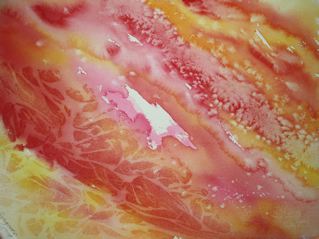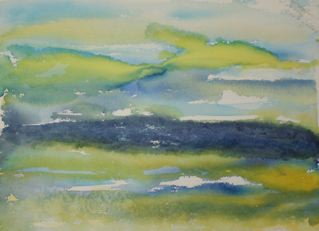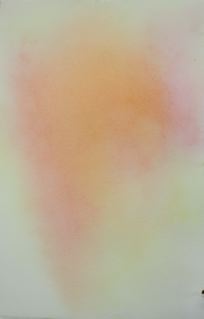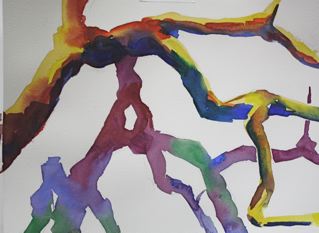
 A state of grace. You know the term, can probably think of times you have experienced it.
A state of grace. You know the term, can probably think of times you have experienced it.
In The Boys in the Boat, they speak of it as the extra in the boat – that state that allows them all to rise above themselves and become one with the boat, – moving together. A pianist In playing a piece of music can be transported by the music to a state that is beyond the room. He/she is one with the composer, the piano, the composition. You can experience this same state in a ski run down a mountain, or in witnessing a sunrise.
Different cultures have various names for this state. In Sumi painting the artist meditates to achieve the state. It is the flow that allows an effortlessness stroke, necessary for good painting.
 In Greek dance, it is called Kefie. You sit and listen to the music. You talk and laugh with your friends. You eat and drink. As the night wears on, the music finds its way inside you. Only then do you get up to dance.
In Greek dance, it is called Kefie. You sit and listen to the music. You talk and laugh with your friends. You eat and drink. As the night wears on, the music finds its way inside you. Only then do you get up to dance.
The Greeks recognizes when someone has the kefie, and they rejoice for them. I have known it in painting and have seen students experiencing it.
However, over and over again I have witnessed students lose the fun of painting, the joy of seeing colors mingle one into the other, of seeing forms emerge as they shift from pleasure in the process – in the flow of color and water, of seamless connection of thought and hand – to wanting RESULTS.
 Even though we know that a pianist (or a singer or dancer) have spent hours of practice and of listening to other musicians and other music before the seamless connection with music and instrument is achieved, or a lot of hours of skiing and falling and trying again before that breathless run down the mountain, art students get in a hurry. They want to Make a Picture before they have mastered the processes. Their priorities impede their progress.
Even though we know that a pianist (or a singer or dancer) have spent hours of practice and of listening to other musicians and other music before the seamless connection with music and instrument is achieved, or a lot of hours of skiing and falling and trying again before that breathless run down the mountain, art students get in a hurry. They want to Make a Picture before they have mastered the processes. Their priorities impede their progress.
Earlier this month we had a delightful week on Orcas while beginning students tried watercolor in the Basic Watercolor workshop. They concentrated on the processes; having fun as they ran colors into colors in different wet-on-wet exercises. They marveled at the enrichment achieved with glazing. They enjoyed wet-blended colors, mastering water/color ratios while making first monsters, and later modeling fruit. The room was a light and happy place as they learned how to handle their brushes to create shapes in a stroke and even as they buckled down to mastering negative painting.

And then, oops. A Painting. Even though the goal was to see how the process they had been learning go together to make a simple painting, the fun stopped. They tried too hard. They started trying to “make it right” instead of seeing how you can use wet-on-wet to set up a background, how you can negative paint to bring out a form, etc.
We talked about what was happening. One of the women who has a career in real estate, articulated that she was results oriented, and this had gotten in the way. How about YOU?

Another had exhibited a lovely feel for moving color with water, achieving lovely hues with her glazes. But in her painting, had stopped trusting the water and color to create. Her colors went opaque and flat. Have you ever done that? Do you still?
What is the answer? You know you need to practice the processes and yet get caught up in making a painting.
You may like the way one student, who has been gone from classes for a while, has been “playing.” Her playing led to pages of paintings she had 3-hole punched and made into a color journal she took to a meditational workshop. The paintings posted here are her paintings from this book.

In a class last weekend we were looking at different color relationships. This student continued to work with colors only; rarely shapes. Occasionally she used a little saran or salt for texture changes. She set a tone of “This is fun!!” which permeated the weekend.

 Try it. Run color. On wet paper, run color into color. Discover what you want to do next. Maybe try colors close together on the color wheel. Then some not so close. Try more water. More paint. Try more tilt or gravity. Drop colors into wet colors with more water, with less water.
Try it. Run color. On wet paper, run color into color. Discover what you want to do next. Maybe try colors close together on the color wheel. Then some not so close. Try more water. More paint. Try more tilt or gravity. Drop colors into wet colors with more water, with less water.
One time I was sequestered on the Oregon Coast working on paintings for a big show. The view from the house included a commanding group of rocks. I decided I would paint this scene every time the light changed. I painted it at dawn and at sunset. In sunshine and in fog. In moonlight. From the beach at dusk. Altogether about a dozen little paintings… and I learned so much about color and glazing. The show went well. But I still remember best those little 1/8 sheets, 1/16th catching the light and color. I learned a lot. And I had fun.
 If you don’t want to just run color. Try wet blending — set up fruit or eggs on your window sill and do a little still life, wet-blending — every day.
If you don’t want to just run color. Try wet blending — set up fruit or eggs on your window sill and do a little still life, wet-blending — every day.
Or take the branch of a tree and wet blend color. See how outrageous you can be. Then how subtle.
Make a background of the darkest colors you can– wet-blending and dropping them in. Go even darker!
Enjoy painting while you learn the processes. You will won’t call it “practice.” You will be having too much fun.
Caroline
 All of the paintings until the last two are by Laura Larson. The two of the apple branch are by Mary Scheibler
All of the paintings until the last two are by Laura Larson. The two of the apple branch are by Mary Scheibler

